01 December 2023
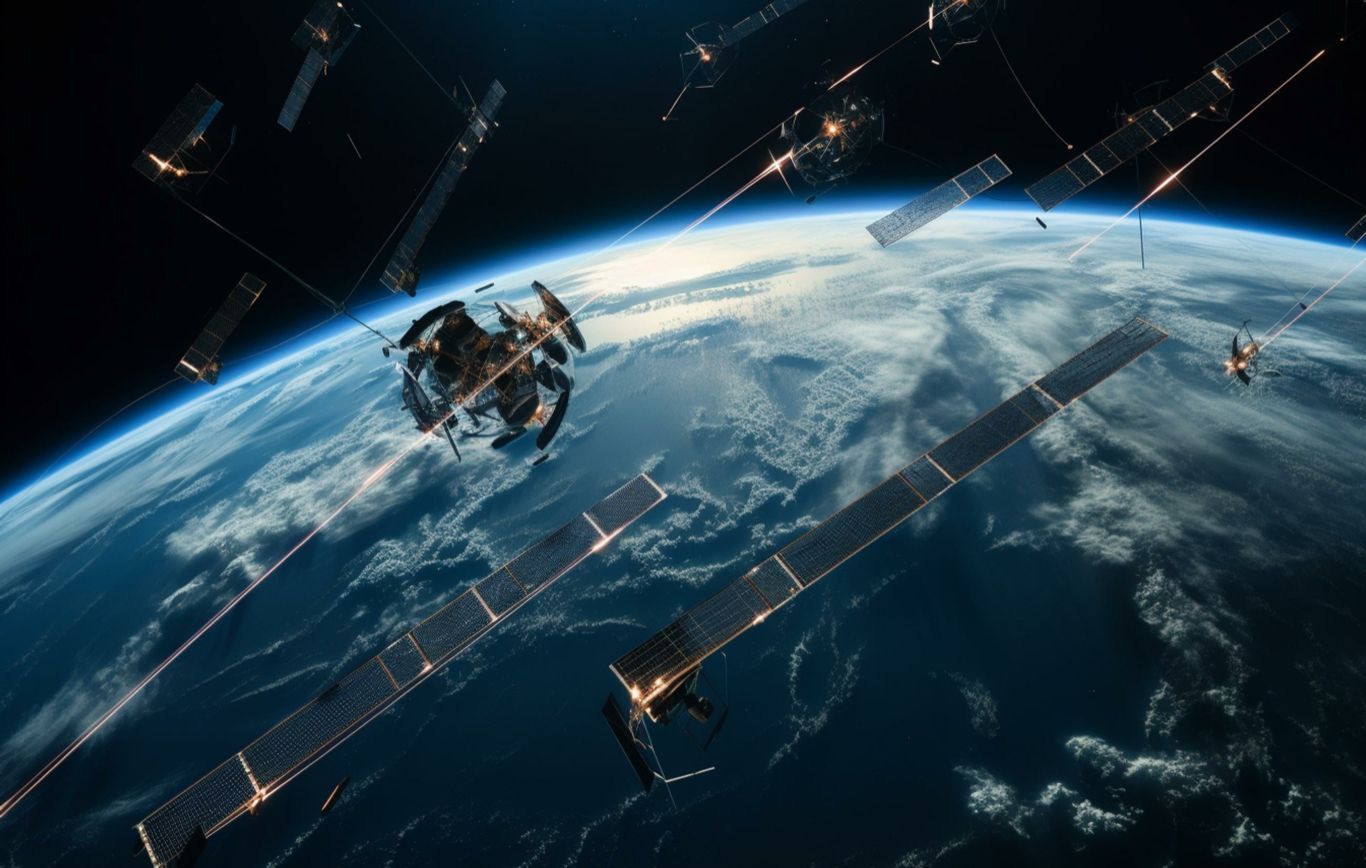
Illustration of Starlink satellites (Image - Adobe)
On Monday Elon Musk met Israel's President Isaac Herzog and Prime Minister Benjamin Netanyahu, coming to agreement which will allow the use of SpaceX’s Starlink constellation in Gaza.
Musk had previously announced that Starlink will be made available to international aid groups in the region, but use has now been expanded, with Israeli minister of communications Shlomo Karhi saying that "Starlink satellite units can only be operated in Israel with the approval of the Israeli Ministry of Communications, including the Gaza Strip.”
This will undoubtedly again raise questions about the role of commercial space entities during armed conflict, and also what influence people like Musk can have in geopolitical matters. Starlink has long been provided to Ukraine since the Russian invasion, but it was revealed in September that Musk directly ordered terminals to be switched off in order to prevent its use in a Ukrainian drone attack.
According to historian Walter Isaacson in his biography on Elon Musk, the SpaceX CEO did so in order to avoid escalating tensions and preventing a nuclear conflict. Musk later interjected to say that he did not technically turn off the terminals, but simply that they were never turned on, and he decided not to activate them.
However, space law expert, Major Jeremy Grunert, has argued that despite this Starlink could still become a legitimate target.
Speaking at the the UK Space Conference in Belfast, he claims that parallels can be drawn with World War 2, where bridges and infrastructure were destroyed during the liberation of Europe. Despite being civilian infrastructure, they became targeted due to their military significance. The logic, he argues, can be applied to commercial space entities, such as Starlink because of its use by the military.
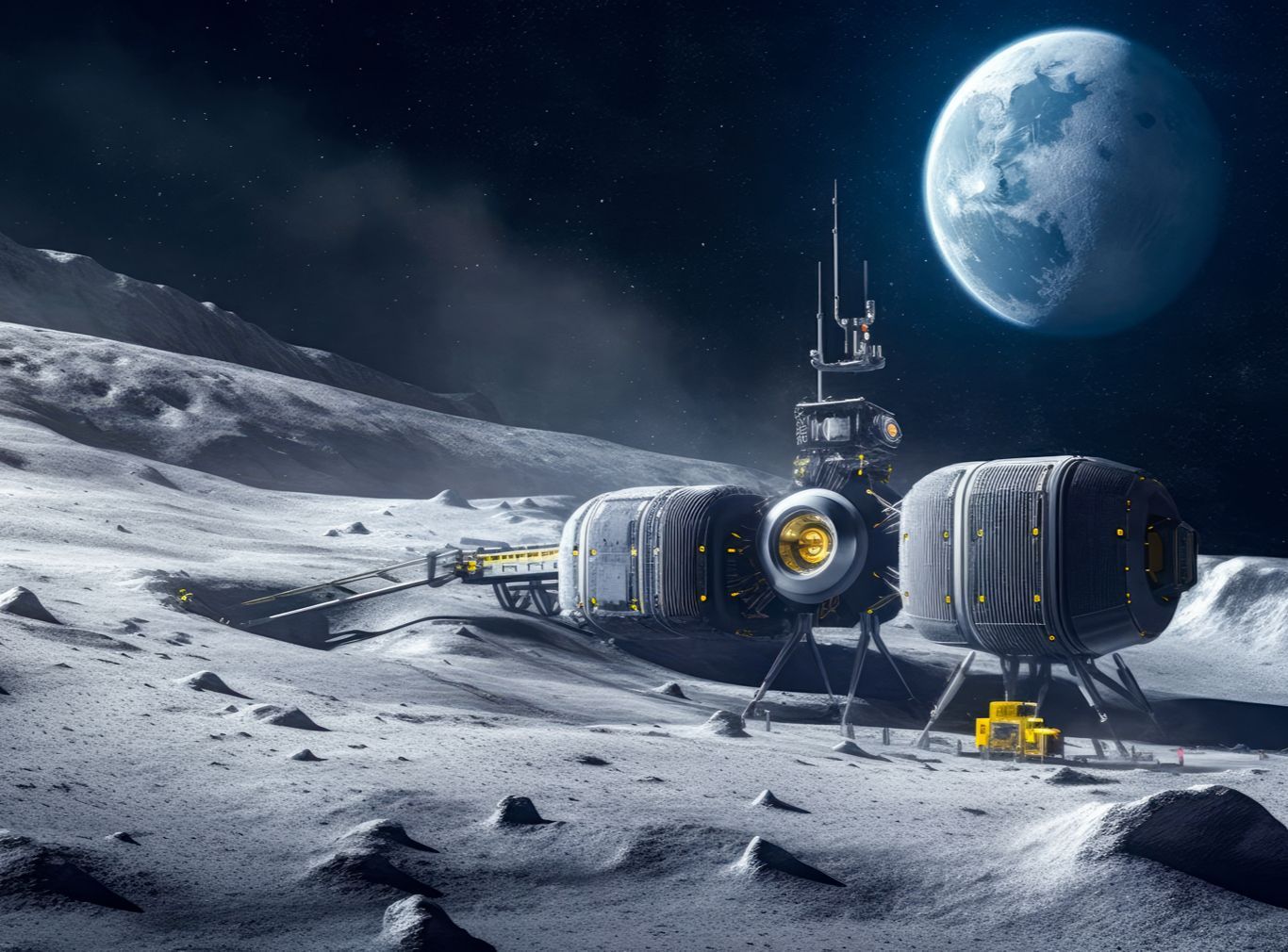
Is a US-China lunar mining race unfolding? (Image - Adobe)
China close the gap, US anticipate race to mine the Moon
In the same week, the US have been discussing their plans to embrace the private sector through their Commercial Space Integration Strategy.
One of the reasons the Pentagon has chosen this strategy lies in their concern about the speed at which China is moving. Last month they released their report on Chinese military capabilities, which stated that Beijing was catching up with the US in space technologies and could gain the advantage should they attack US satellites.
Employing the services of the commercial sector could provide the US with “…the availability of commercial space solutions during competition, crisis and conflict,” Pentagon Spokesman Eric Pahon said Nov. 27 in a statement to Space News. While tapping into commercial innovation may provide the military with the upper hand against China, it's also another indicator of how the private sector is becoming further embroiled in any future space conflicts.
Lunar mining is also becoming a contentious matter in the US-China rivalry, with interest in offworld resources increasing. Only last moth a scientific journal from Acta Astronautica outlined plans for the need for an international lunar prospecting programme, writing that lunar resources have the potential to “directly benefit society here on Earth.” Find highlights of the paper here.
Michael Usowski, the Defense Intelligence Agency's senior defence intelligence analyst for the Office of Space and Counterspace has emphasised that the US is in a race with China when it comes to lunar mining, saying that “They (China) want to be that country that sets the norms in space.” Indeed, with the lack governance to regulate space mining, those who get their first may well also be the ones who write the rules.
China show no sings of slowing-down
The substantial lead the US once had over China does appear to be narrowing. It’s over a year since China’s Tiangong space station was finished, and this week the first images of the completed station were released.
China is also looking to add a further three modules to the station, bringing it up to six in total, and are also looking to add a “Hubble-class” telescope. This comes as a timely reminder that the International Space Station (ISS) is coming to the end of its life, with NASA recently admitting there may be a gap between the retirement of ISS and the establishment of new commercial alternatives.
China is also making progress with the development of full-flow staged-combustion-cycle methane engines, which will be used for their highly anticipated reusable super heavy-lift launcher, Long March-9, seen as their own version of the SpaceX Starship.
The China Aerospace Science and Technology Corp. (CASC) is anticipating 2033 for the first flight of the vehicle.
It’s also been reported that the China Academy of Launch Vehicle Technology (CALT) is designing a reusable air-launched orbital rocket, similar to what Virgin Orbit aimed to deliver before they announced bankruptcy earlier in the year. The system would involve carrying the rocket on an aircraft to an altitude around 11.9km, before being released mid-air and launching into orbit.
The vehicle could reused for flexible launches of small satellites, with the ability to take-off and land on a runway, avoiding the need to use a spaceport.

NASA's Ingenuity helicopter (Image - NASA/JPL-Caltech)
NASA face budget problems, delay to Moon landing
China’s advances come at time when NASA faces concerns over its budget. Parson Desai, Associate Administrator (Acting) of the Space Technology Mission Directorate (STMD), has warned that spending bills for 2024 are less than what NASA has requested, casting doubt on the ability to sufficiently support some programmes.
The administration already announced earlier this month that they will be slowing down work on the Mars Sample Return project (MSR) due to budget uncertainty. Meanwhile, China are aiming to carry out their own MSR by the end of the decade, and this week unveiled a Mars helicopter, which could help them in this endeavour.
The quadcopter, named MarsBird-VII, seems to take inspiration from NASA’s Ingenuity helicopter, which is currently active on the red planet and performing beyond all expectations.
The US also appear to facing delays on their planned 2025 crewed lunar landing mission, Artemis-III. On Thursday, the US Government Accountability Office (GAO) blamed delays in both SpaceX’s Starship Human Landing system (HLS), designed to return humans to the surface, and also Axiom’s development of new spacesuits.
The GAO cast doubt on the schedule, saying that “…the Artemis III crewed lunar landing is unlikely to occur in 2025.”
Despite budget doubts, space needs to inspire about its benefits for Earth
There are good reasons to be concerned about the threats that the industry is facing, whether physical or financial. However, space does have the ability to enhance life on Earth and become a great benefit for humanity.
Writing in an article for Forbes, Shelli Brunswick, COO of Space Foundation, highlighted the importance of this message, saying that “if we in the space industry don't figure out how to communicate how amazing the industry is to the people outside the space community, funding for projects—funding that fuels growth—will dry up.”
She went on to stress the importance of getting “young people excited about space and provide pathways for opportunity” and the necessity to “inspire this generation to upskill and reskill into space careers.” She is certainly correct. Our success in space, especially when at a time when it is partly being anchored with public money, can only be realised through public support and awareness. Read her full article here.
Success hinges on public awareness
Space is already enhancing our lives on Earth, such as building global communications and assisting in our fight against climate change through Earth observation and satellite remote sensing. Newer technologies are also already delivering results, such as in-space manufacturing, recently demonstrated by Varda Space Industries with their in-obrit manufacture of pharmaceuticals, utilising the benefits of micro-gravity for manufacturing delicate materials.
In the longer-term, humanity may look to realise the potential of space-based solar power, tapping into the limitless power of the sun to answer our energy needs. Furthermore, space and lunar mining could also provide us with an untapped resource of scarce and precious elements, required to meet our technology and energy demands of the future.
But without the support of the public, this future may not be realised, or simply become the benefit of the few. Public agencies and private industry may now also find it pressing to reach out to the public and create awareness about the benefits space has to offer.
Our future in space

Illustration of Starlink satellites (Image - Adobe)
01 December 2023
Starlink offered in Gaza, US-China lunar mining race, NASA budget concerns - Space News Roundup
On Monday Elon Musk met Israel's President Isaac Herzog and Prime Minister Benjamin Netanyahu, coming to agreement which will allow the use of SpaceX’s Starlink constellation in Gaza.
Musk had previously announced that Starlink will be made available to international aid groups in the region, but use has now been expanded, with Israeli minister of communications Shlomo Karhi saying that "Starlink satellite units can only be operated in Israel with the approval of the Israeli Ministry of Communications, including the Gaza Strip.”
This will undoubtedly again raise questions about the role of commercial space entities during armed conflict, and also what influence people like Musk can have in geopolitical matters. Starlink has long been provided to Ukraine since the Russian invasion, but it was revealed in September that Musk directly ordered terminals to be switched off in order to prevent its use in a Ukrainian drone attack.
According to historian Walter Isaacson in his biography on Elon Musk, the SpaceX CEO did so in order to avoid escalating tensions and preventing a nuclear conflict. Musk later interjected to say that he did not technically turn off the terminals, but simply that they were never turned on, and he decided not to activate them.
However, space law expert, Major Jeremy Grunert, has argued that despite this Starlink could still become a legitimate target.
Speaking at the the UK Space Conference in Belfast, he claims that parallels can be drawn with World War 2, where bridges and infrastructure were destroyed during the liberation of Europe. Despite being civilian infrastructure, they became targeted due to their military significance. The logic, he argues, can be applied to commercial space entities, such as Starlink because of its use by the military.
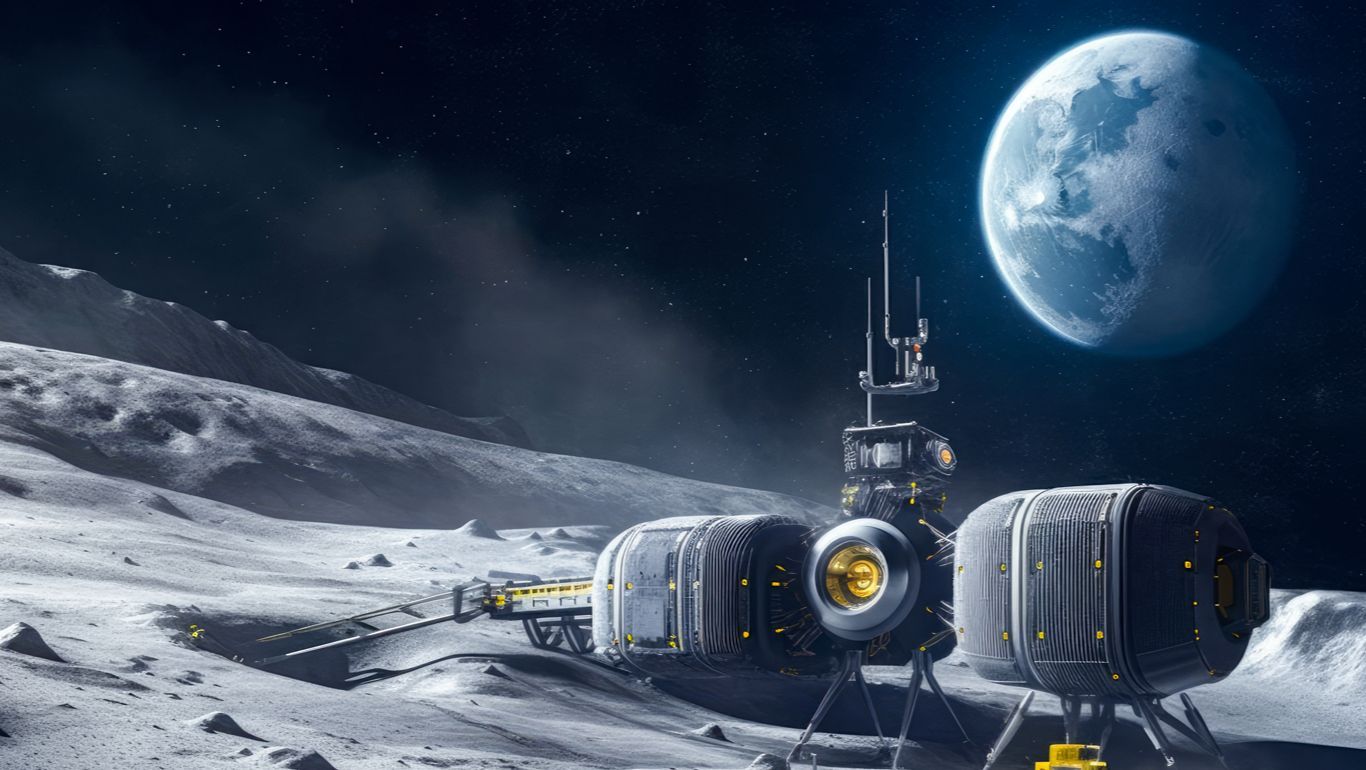
Is a US-China lunar mining race unfolding? (Image - Adobe)
China close the gap, US anticipate race to mine the Moon
In the same week, the US have been discussing their plans to embrace the private sector through their Commercial Space Integration Strategy.
One of the reasons the Pentagon has chosen this strategy lies in their concern about the speed at which China is moving. Last month they released their report on Chinese military capabilities, which stated that Beijing was catching up with the US in space technologies and could gain the advantage should they attack US satellites.
Employing the services of the commercial sector could provide the US with “…the availability of commercial space solutions during competition, crisis and conflict,” Pentagon Spokesman Eric Pahon said Nov. 27 in a statement to Space News. While tapping into commercial innovation may provide the military with the upper hand against China, it's also another indicator of how the private sector is becoming further embroiled in any future space conflicts.
Lunar mining is also becoming a contentious matter in the US-China rivalry, with interest in offworld resources increasing. Only last moth a scientific journal from Acta Astronautica outlined plans for the need for an international lunar prospecting programme, writing that lunar resources have the potential to “directly benefit society here on Earth.” Find highlights of the paper here.
Michael Usowski, the Defense Intelligence Agency's senior defence intelligence analyst for the Office of Space and Counterspace has emphasised that the US is in a race with China when it comes to lunar mining, saying that “They (China) want to be that country that sets the norms in space.” Indeed, with the lack governance to regulate space mining, those who get their first may well also be the ones who write the rules.
China show no sings of slowing-down
The substantial lead the US once had over China does appear to be narrowing. It’s over a year since China’s Tiangong space station was finished, and this week the first images of the completed station were released.
China is also looking to add a further three modules to the station, bringing it up to six in total, and are also looking to add a “Hubble-class” telescope. This comes as a timely reminder that the International Space Station (ISS) is coming to the end of its life, with NASA recently admitting there may be a gap between the retirement of ISS and the establishment of new commercial alternatives.
China is also making progress with the development of full-flow staged-combustion-cycle methane engines, which will be used for their highly anticipated reusable super heavy-lift launcher, Long March-9, seen as their own version of the SpaceX Starship.
The China Aerospace Science and Technology Corp. (CASC) is anticipating 2033 for the first flight of the vehicle.
It’s also been reported that the China Academy of Launch Vehicle Technology (CALT) is designing a reusable air-launched orbital rocket, similar to what Virgin Orbit aimed to deliver before they announced bankruptcy earlier in the year. The system would involve carrying the rocket on an aircraft to an altitude around 11.9km, before being released mid-air and launching into orbit.
The vehicle could reused for flexible launches of small satellites, with the ability to take-off and land on a runway, avoiding the need to use a spaceport.
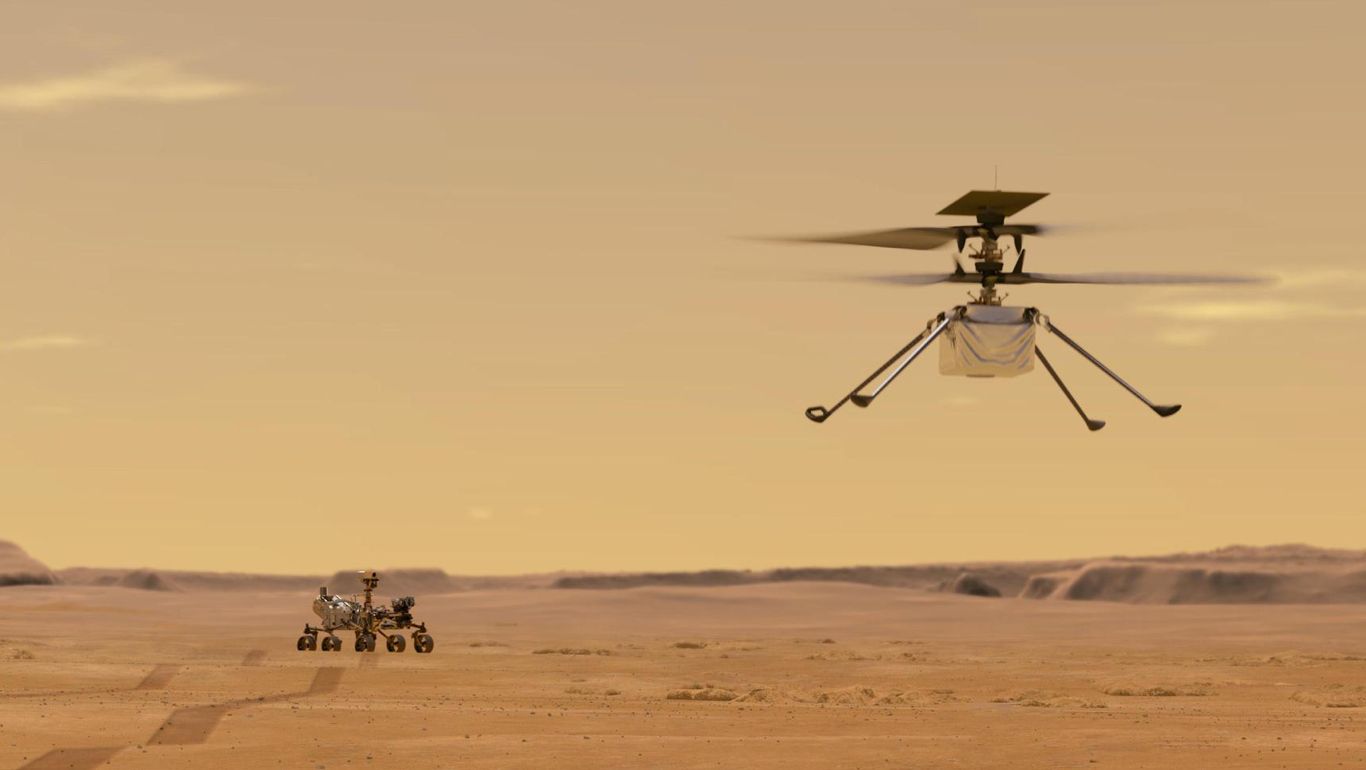
NASA's Ingenuity helicopter (Image - NASA/JPL-Caltech)
NASA face budget problems, delay to Moon landing
China’s advances come at time when NASA faces concerns over its budget. Parson Desai, Associate Administrator (Acting) of the Space Technology Mission Directorate (STMD), has warned that spending bills for 2024 are less than what NASA has requested, casting doubt on the ability to sufficiently support some programmes.
The administration already announced earlier this month that they will be slowing down work on the Mars Sample Return project (MSR) due to budget uncertainty. Meanwhile, China are aiming to carry out their own MSR by the end of the decade, and this week unveiled a Mars helicopter, which could help them in this endeavour.
The quadcopter, named MarsBird-VII, seems to take inspiration from NASA’s Ingenuity helicopter, which is currently active on the red planet and performing beyond all expectations.
The US also appear to facing delays on their planned 2025 crewed lunar landing mission, Artemis-III. On Thursday, the US Government Accountability Office (GAO) blamed delays in both SpaceX’s Starship Human Landing system (HLS), designed to return humans to the surface, and also Axiom’s development of new spacesuits.
The GAO cast doubt on the schedule, saying that “…the Artemis III crewed lunar landing is unlikely to occur in 2025.”
Despite budget doubts, space needs to inspire about its benefits for Earth
There are good reasons to be concerned about the threats that the industry is facing, whether physical or financial. However, space does have the ability to enhance life on Earth and become a great benefit for humanity.
Writing in an article for Forbes, Shelli Brunswick, COO of Space Foundation, highlighted the importance of this message, saying that “if we in the space industry don't figure out how to communicate how amazing the industry is to the people outside the space community, funding for projects—funding that fuels growth—will dry up.”
She went on to stress the importance of getting “young people excited about space and provide pathways for opportunity” and the necessity to “inspire this generation to upskill and reskill into space careers.” She is certainly correct. Our success in space, especially when at a time when it is partly being anchored with public money, can only be realised through public support and awareness. Read her full article here.
Success hinges on public awareness
Space is already enhancing our lives on Earth, such as building global communications and assisting in our fight against climate change through Earth observation and satellite remote sensing. Newer technologies are also already delivering results, such as in-space manufacturing, recently demonstrated by Varda Space Industries with their in-obrit manufacture of pharmaceuticals, utilising the benefits of micro-gravity for manufacturing delicate materials.
In the longer-term, humanity may look to realise the potential of space-based solar power, tapping into the limitless power of the sun to answer our energy needs. Furthermore, space and lunar mining could also provide us with an untapped resource of scarce and precious elements, required to meet our technology and energy demands of the future.
But without the support of the public, this future may not be realised, or simply become the benefit of the few. Public agencies and private industry may now also find it pressing to reach out to the public and create awareness about the benefits space has to offer.
Share this article
01 December 2023
Starlink offered in Gaza, US-China lunar mining race, NASA budget concerns - Space News Roundup

Illustration of Starlink satellites (Image - Adobe)
On Monday Elon Musk met Israel's President Isaac Herzog and Prime Minister Benjamin Netanyahu, coming to agreement which will allow the use of SpaceX’s Starlink constellation in Gaza.
Musk had previously announced that Starlink will be made available to international aid groups in the region, but use has now been expanded, with Israeli minister of communications Shlomo Karhi saying that "Starlink satellite units can only be operated in Israel with the approval of the Israeli Ministry of Communications, including the Gaza Strip.”
This will undoubtedly again raise questions about the role of commercial space entities during armed conflict, and also what influence people like Musk can have in geopolitical matters. Starlink has long been provided to Ukraine since the Russian invasion, but it was revealed in September that Musk directly ordered terminals to be switched off in order to prevent its use in a Ukrainian drone attack.
According to historian Walter Isaacson in his biography on Elon Musk, the SpaceX CEO did so in order to avoid escalating tensions and preventing a nuclear conflict. Musk later interjected to say that he did not technically turn off the terminals, but simply that they were never turned on, and he decided not to activate them.
However, space law expert, Major Jeremy Grunert, has argued that despite this Starlink could still become a legitimate target.
Speaking at the the UK Space Conference in Belfast, he claims that parallels can be drawn with World War 2, where bridges and infrastructure were destroyed during the liberation of Europe. Despite being civilian infrastructure, they became targeted due to their military significance. The logic, he argues, can be applied to commercial space entities, such as Starlink because of its use by the military.
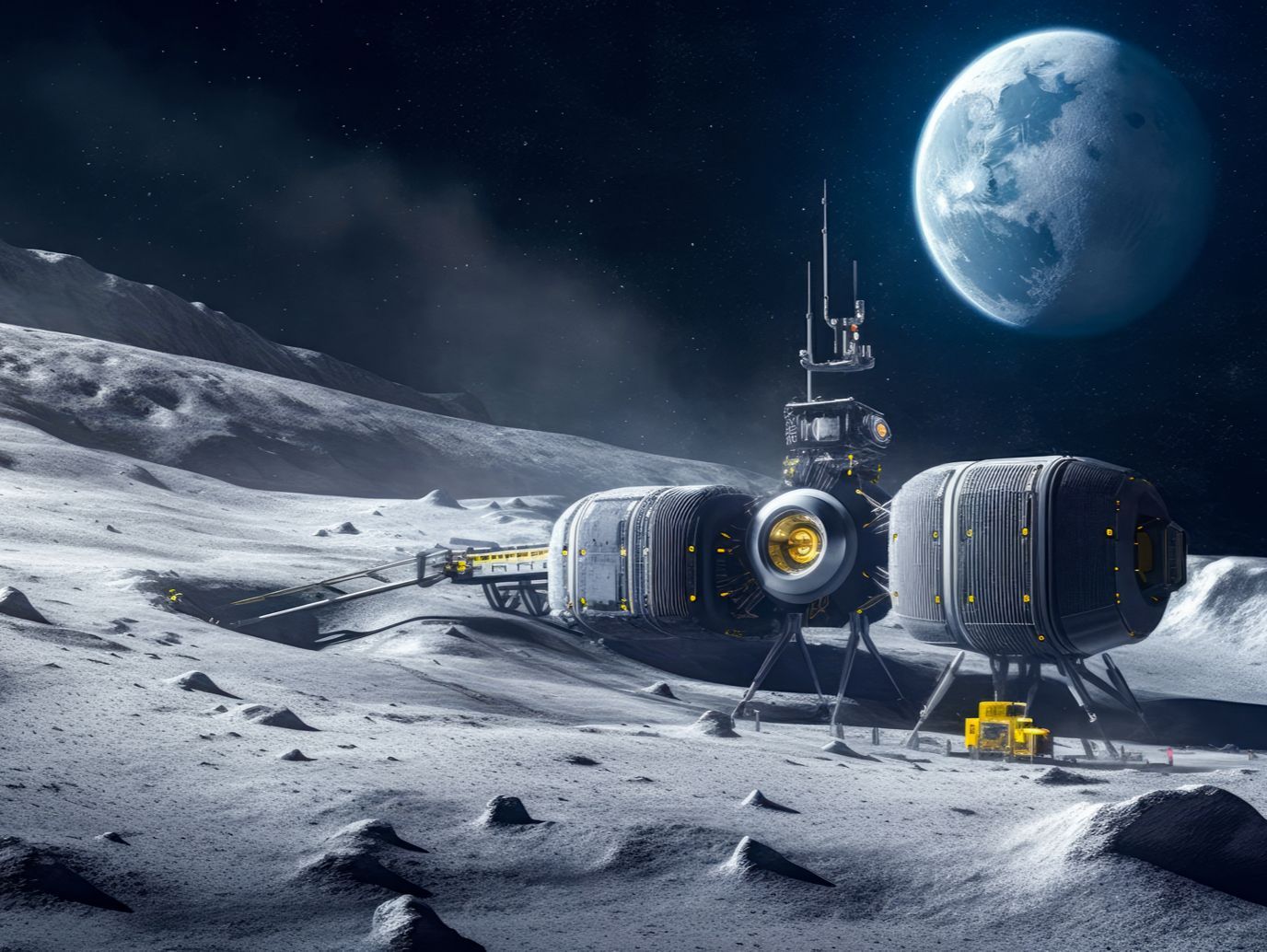
Is a US-China lunar mining race unfolding? (Image - Adobe)
China close the gap, US anticipate race to mine the Moon
In the same week, the US have been discussing their plans to embrace the private sector through their Commercial Space Integration Strategy.
One of the reasons the Pentagon has chosen this strategy lies in their concern about the speed at which China is moving. Last month they released their report on Chinese military capabilities, which stated that Beijing was catching up with the US in space technologies and could gain the advantage should they attack US satellites.
Employing the services of the commercial sector could provide the US with “…the availability of commercial space solutions during competition, crisis and conflict,” Pentagon Spokesman Eric Pahon said Nov. 27 in a statement to Space News. While tapping into commercial innovation may provide the military with the upper hand against China, it's also another indicator of how the private sector is becoming further embroiled in any future space conflicts.
Lunar mining is also becoming a contentious matter in the US-China rivalry, with interest in offworld resources increasing. Only last moth a scientific journal from Acta Astronautica outlined plans for the need for an international lunar prospecting programme, writing that lunar resources have the potential to “directly benefit society here on Earth.” Find highlights of the paper here.
Michael Usowski, the Defense Intelligence Agency's senior defence intelligence analyst for the Office of Space and Counterspace has emphasised that the US is in a race with China when it comes to lunar mining, saying that “They (China) want to be that country that sets the norms in space.” Indeed, with the lack governance to regulate space mining, those who get their first may well also be the ones who write the rules.
China show no sings of slowing-down
The substantial lead the US once had over China does appear to be narrowing. It’s over a year since China’s Tiangong space station was finished, and this week the first images of the completed station were released.
China is also looking to add a further three modules to the station, bringing it up to six in total, and are also looking to add a “Hubble-class” telescope. This comes as a timely reminder that the International Space Station (ISS) is coming to the end of its life, with NASA recently admitting there may be a gap between the retirement of ISS and the establishment of new commercial alternatives.
China is also making progress with the development of full-flow staged-combustion-cycle methane engines, which will be used for their highly anticipated reusable super heavy-lift launcher, Long March-9, seen as their own version of the SpaceX Starship.
The China Aerospace Science and Technology Corp. (CASC) is anticipating 2033 for the first flight of the vehicle.
It’s also been reported that the China Academy of Launch Vehicle Technology (CALT) is designing a reusable air-launched orbital rocket, similar to what Virgin Orbit aimed to deliver before they announced bankruptcy earlier in the year. The system would involve carrying the rocket on an aircraft to an altitude around 11.9km, before being released mid-air and launching into orbit.
The vehicle could reused for flexible launches of small satellites, with the ability to take-off and land on a runway, avoiding the need to use a spaceport.

NASA's Ingenuity helicopter (Image - NASA/JPL-Caltech)
NASA face budget problems, delay to Moon landing
China’s advances come at time when NASA faces concerns over its budget. Parson Desai, Associate Administrator (Acting) of the Space Technology Mission Directorate (STMD), has warned that spending bills for 2024 are less than what NASA has requested, casting doubt on the ability to sufficiently support some programmes.
The administration already announced earlier this month that they will be slowing down work on the Mars Sample Return project (MSR) due to budget uncertainty. Meanwhile, China are aiming to carry out their own MSR by the end of the decade, and this week unveiled a Mars helicopter, which could help them in this endeavour.
The quadcopter, named MarsBird-VII, seems to take inspiration from NASA’s Ingenuity helicopter, which is currently active on the red planet and performing beyond all expectations.
The US also appear to facing delays on their planned 2025 crewed lunar landing mission, Artemis-III. On Thursday, the US Government Accountability Office (GAO) blamed delays in both SpaceX’s Starship Human Landing system (HLS), designed to return humans to the surface, and also Axiom’s development of new spacesuits.
The GAO cast doubt on the schedule, saying that “…the Artemis III crewed lunar landing is unlikely to occur in 2025.”
Despite budget doubts, space needs to inspire about its benefits for Earth
There are good reasons to be concerned about the threats that the industry is facing, whether physical or financial. However, space does have the ability to enhance life on Earth and become a great benefit for humanity.
Writing in an article for Forbes, Shelli Brunswick, COO of Space Foundation, highlighted the importance of this message, saying that “if we in the space industry don't figure out how to communicate how amazing the industry is to the people outside the space community, funding for projects—funding that fuels growth—will dry up.”
She went on to stress the importance of getting “young people excited about space and provide pathways for opportunity” and the necessity to “inspire this generation to upskill and reskill into space careers.” She is certainly correct. Our success in space, especially when at a time when it is partly being anchored with public money, can only be realised through public support and awareness. Read her full article here.
Success hinges on public awareness
Space is already enhancing our lives on Earth, such as building global communications and assisting in our fight against climate change through Earth observation and satellite remote sensing. Newer technologies are also already delivering results, such as in-space manufacturing, recently demonstrated by Varda Space Industries with their in-obrit manufacture of pharmaceuticals, utilising the benefits of micro-gravity for manufacturing delicate materials.
In the longer-term, humanity may look to realise the potential of space-based solar power, tapping into the limitless power of the sun to answer our energy needs. Furthermore, space and lunar mining could also provide us with an untapped resource of scarce and precious elements, required to meet our technology and energy demands of the future.
But without the support of the public, this future may not be realised, or simply become the benefit of the few. Public agencies and private industry may now also find it pressing to reach out to the public and create awareness about the benefits space has to offer.
Share this article
External Links
This Week
*News articles posted here are not property of ANASDA GmbH and belong to their respected owners. Postings here are external links only.










